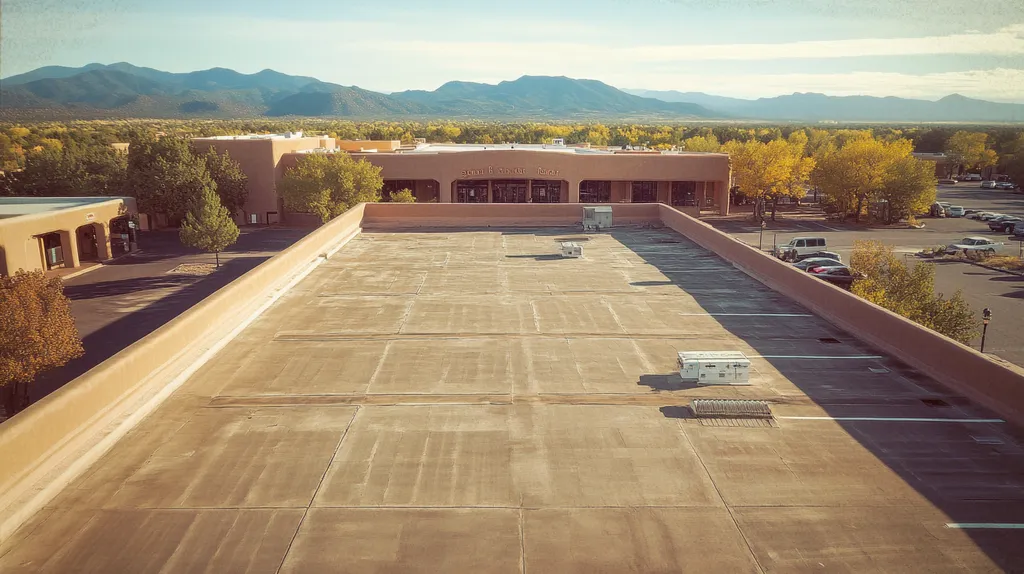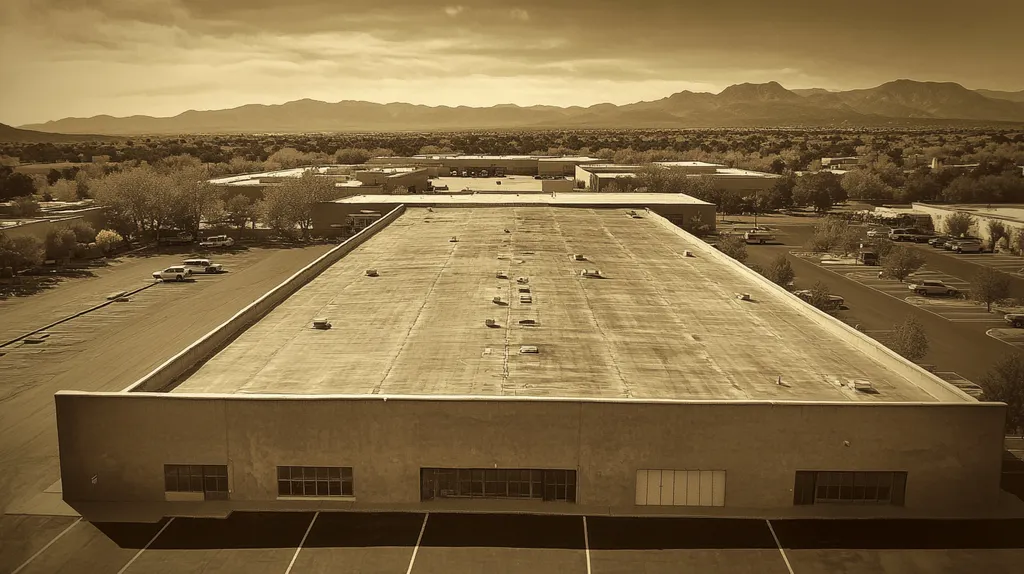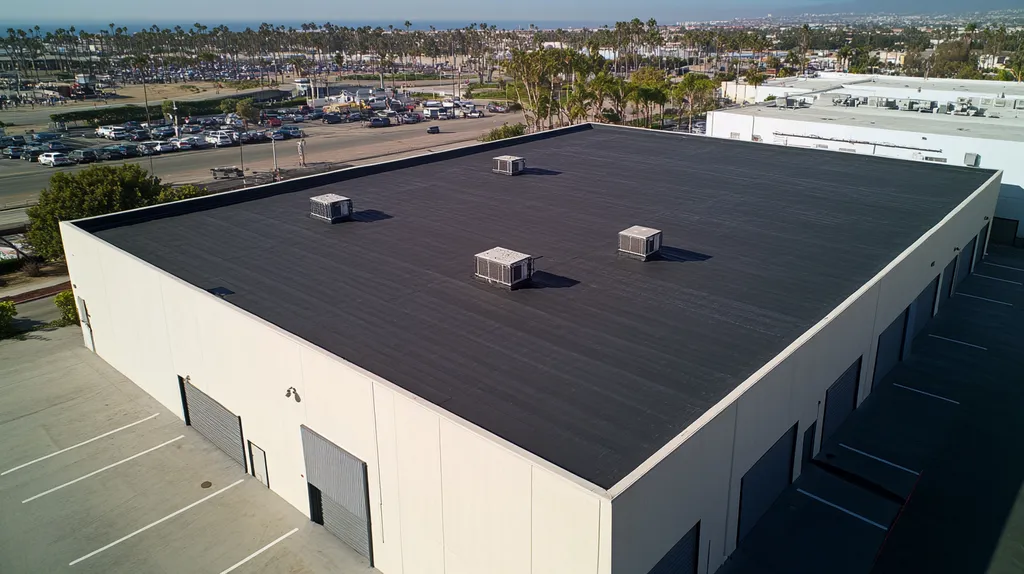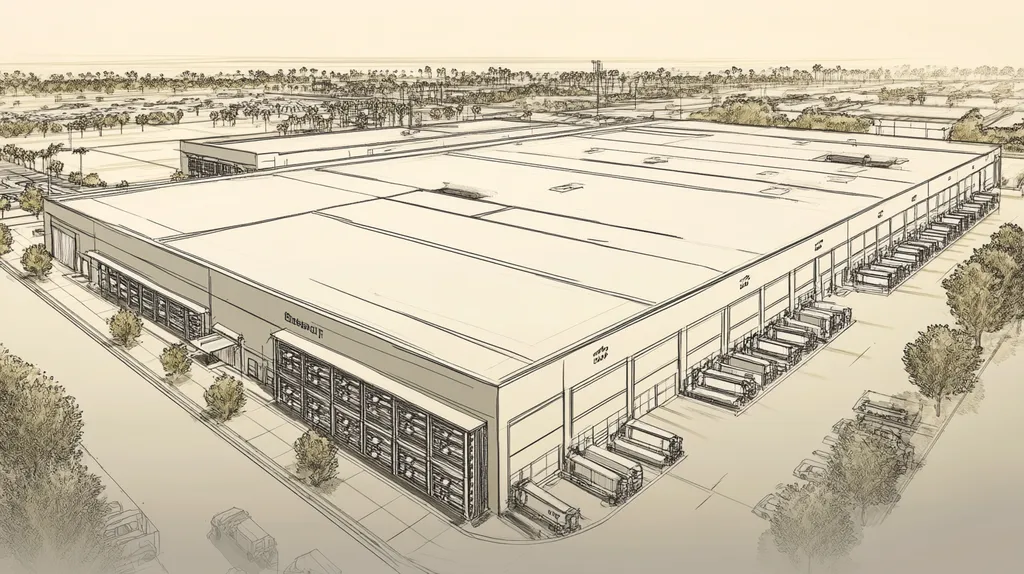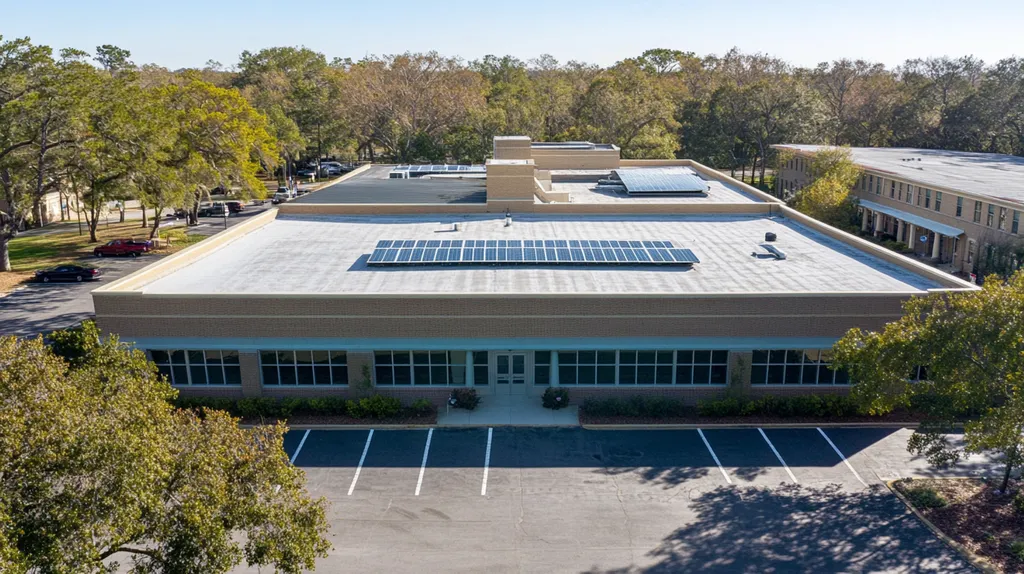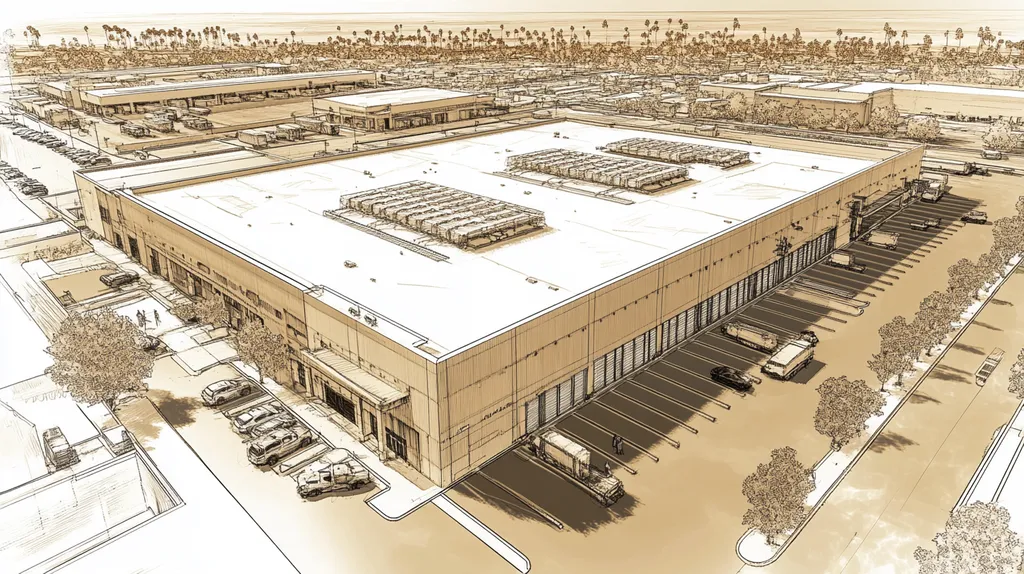Welcome to today’s Battle Royale featuring two roofing heavyweights: “Industrial Roof Regulations” in the east corner versus “Commercial Roof Regulations” in the west!
Tonight’s showdown pits these contenders against each other across six punishing rounds designed to test every aspect of their performance for Unique Compliance.
At stake? Millions in potential costs, decades of building protection, and the critical performance demands of modern commercial and industrial facilities.
Our professional judging panel will evaluate each round on technical merit, real-world performance, and value delivery. After all six rounds, we’ll declare our ultimate champion.
Ladies and gentlemen, facility managers and building owners… it’s time to rumble!
ROUND 1: INITIAL COSTS & INSTALLATION
In today’s complex regulatory environment, the financial implications of roofing choices have never been more critical. Property owners and facility managers face a stark reality: selecting the wrong roofing system can lead to substantial cost overruns, compliance issues, and operational disruptions. Understanding the distinct requirements between industrial and commercial roofing installations is essential for making informed decisions that protect both assets and bottom lines.
Material Expenses
Industrial roofs must meet strict OSHA, EPA, and industry-specific regulations, requiring materials engineered for extreme durability and safety compliance. These specialized materials often come with premium price tags, reflecting their enhanced performance capabilities and regulatory certifications. (source: FW Walton)
Commercial roofing materials, while still high-quality, typically face less stringent requirements. This flexibility allows for a broader range of material options, often at more competitive price points.
The cost difference can be substantial, with industrial roofing materials frequently commanding 30-50% higher prices than their commercial counterparts. This price differential reflects not just material quality, but also the extensive testing and certification processes required for industrial applications.
Given the significant cost variation, commercial roofing clearly holds the “ADVANTAGE” in material expenses.
Installation Complexity
Industrial roof installations demand precise attention to regulatory compliance and safety protocols. These projects often require specialized equipment, certified installers, and extensive documentation to meet strict industrial standards.
Commercial installations generally follow more standardized procedures. While still requiring skilled labor, these projects typically involve fewer regulatory hurdles and more straightforward installation processes.
The complexity gap becomes particularly evident in specialized industrial facilities, where installation must account for exhaust systems, heavy equipment loads, and chemical resistance requirements.
Based on the simpler installation requirements, commercial roofing claims the “ADVANTAGE” in this category.
Project Timeline
Timeline considerations significantly impact both facility operations and project costs. Industrial roofing projects typically require longer completion times due to enhanced safety protocols, multiple inspection phases, and more complex installation procedures.
Commercial projects often benefit from streamlined workflows and fewer regulatory checkpoints. This efficiency typically results in faster project completion and reduced disruption to business operations.
The extended timeline for industrial installations, while necessary for safety and compliance, can increase overall project costs through longer labor requirements and extended facility disruption.
With faster completion times and fewer regulatory delays, commercial roofing earns the “ADVANTAGE” in project timeline considerations.
ROUND 1 WINNER: COMMERCIAL ROOF REGULATIONS
ROUND 2: DURABILITY & LIFESPAN
When evaluating roofing investments, durability and lifespan considerations can mean the difference between a sound investment and a costly mistake. Modern facility requirements demand increasingly resilient roofing solutions that can withstand everything from extreme weather to chemical exposure. Understanding the distinct durability requirements between industrial and commercial roofing systems has become essential for making informed decisions that protect long-term facility operations.
Material Resilience
Industrial roofs must incorporate specialized ventilation and drainage systems while meeting strict OSHA, EPA, and industry-specific regulations. These systems require materials engineered for extreme durability, with specialized coatings and reinforcements that can withstand harsh industrial environments. (source: FW Walton)
Commercial roofing materials, while durable, typically face less extreme environmental challenges. These systems often utilize standard membrane materials that provide adequate protection for typical business environments but may not withstand industrial-grade stress.
The enhanced material specifications and regulatory compliance requirements of industrial roofing systems result in significantly longer material lifespans. With proper maintenance, industrial roofing materials often last 10-15 years longer than their commercial counterparts.
Given their superior durability requirements and longer lifespan potential, industrial roofing clearly holds the “ADVANTAGE” in material resilience.
Maintenance Requirements
Industrial roof maintenance demands rigorous inspection schedules and specialized maintenance protocols. These systems require regular monitoring of structural integrity, chemical resistance, and ventilation system performance.
Commercial roof maintenance follows more standardized procedures, typically focusing on basic weatherproofing and drainage system checks. While still important, these maintenance requirements are less intensive and require less specialized expertise.
The comprehensive maintenance programs required for industrial roofs, while more demanding, result in better long-term performance and reduced likelihood of catastrophic failure. This proactive approach typically extends system lifespan by 25-40% compared to standard commercial maintenance programs.
Based on superior long-term performance outcomes, industrial roofing claims the “ADVANTAGE” in maintenance effectiveness.
Environmental Resistance
Industrial roofing systems must withstand extreme temperature fluctuations, chemical exposure, and heavy equipment vibrations. These environmental challenges require sophisticated engineering solutions and redundant protection systems.
Commercial roofs generally face more moderate environmental challenges, primarily focused on weather resistance and standard UV protection. While still important, these requirements are less demanding than industrial environments.
The enhanced environmental resistance capabilities of industrial roofing systems provide superior protection against a broader range of potential threats. This comprehensive protection translates to fewer repairs and longer overall system life.
With superior resistance to environmental challenges, industrial roofing earns the “ADVANTAGE” in this category.
ROUND 2 WINNER: INDUSTRIAL ROOF REGULATIONS
ROUND 3: PERFORMANCE FACTORS
Performance standards in roofing systems directly impact building safety, operational efficiency, and long-term cost management. With increasing regulatory scrutiny and rising energy costs, the performance requirements for both industrial and commercial roofs have evolved significantly. Understanding these distinct requirements has become crucial for property owners and facility managers seeking to optimize their building envelope while maintaining compliance.
Structural Integrity
Commercial roofs must meet specific structural integrity standards to withstand environmental forces such as wind, snow, and seismic activity. Building codes dictate minimum requirements for slope, materials, and supporting structures based on local climate conditions and intended use. (source: North American Roofing)
Industrial roofing regulations demand additional structural considerations to accommodate heavy equipment, extensive HVAC systems, and specialized ventilation requirements. These enhanced requirements often necessitate reinforced support systems and specialized load distribution designs.
The more rigorous structural requirements for industrial applications ensure greater long-term stability and safety under demanding conditions. This enhanced structural integrity provides superior protection against both operational and environmental stresses.
Given their more comprehensive structural requirements, industrial roofing holds the “ADVANTAGE” in this category.
Thermal Performance
Modern roofing systems must effectively manage thermal loads while meeting increasingly stringent energy efficiency standards. Industrial facilities face unique challenges in this arena, as their operations often generate significant heat that must be properly managed through the roofing system.
Commercial roofing regulations typically focus on standard insulation values and basic thermal management. While these requirements provide adequate performance for most business environments, they may not address more demanding thermal conditions.
Industrial roofing regulations mandate sophisticated thermal management solutions, including specialized materials and ventilation systems. These requirements ensure optimal performance under extreme temperature conditions while maintaining energy efficiency.
Based on superior thermal management capabilities, industrial roofing claims the “ADVANTAGE” in this category.
Water Resistance
Water infiltration represents one of the most significant threats to roofing system integrity. Industrial roofing regulations require comprehensive waterproofing solutions that can withstand not just precipitation, but also chemical exposure and extreme temperature fluctuations.
Commercial roofing standards focus primarily on traditional weatherproofing measures. While these provide adequate protection against normal precipitation, they may not address the complex water resistance needs of industrial environments.
The heightened water resistance requirements for industrial applications ensure superior protection against a broader range of moisture-related challenges. This comprehensive approach results in better long-term performance and reduced maintenance needs.
With more robust water resistance requirements, industrial roofing earns the “ADVANTAGE” in this category.
ROUND 3 WINNER: INDUSTRIAL ROOF REGULATIONS
ROUND 4: MAINTENANCE REQUIREMENTS
In today’s complex facility management landscape, roof maintenance requirements can make or break operational success. Recent industry data shows that proper maintenance can extend roof life by up to 50%, while neglect can reduce it by more than 60%. For facility managers navigating between industrial and commercial requirements, understanding these distinct maintenance obligations has become crucial for protecting both assets and operations.
Inspection Frequency and Scope
Industrial roofs require corrosion monitoring, structural integrity assessments, and chemical resistance checks, which are more complex than the routine inspections and basic repairs needed for commercial roofs. These specialized requirements demand more frequent and detailed evaluations to maintain compliance and safety standards. (source: FW Walton)
Commercial roof inspections typically follow standardized schedules focused primarily on weather damage and basic structural integrity. This simplified scope allows for more predictable maintenance planning and fewer specialized assessment requirements.
The comprehensive nature of industrial roof inspections, while more demanding, provides superior risk management and early problem detection. This proactive approach helps prevent catastrophic failures and extends system longevity.
Given their more thorough inspection protocols, industrial roofing claims the “ADVANTAGE” in this category.
Technical Expertise Requirements
Industrial roof maintenance demands highly specialized knowledge of chemical resistance, ventilation systems, and industrial equipment impacts. Maintenance teams must understand complex regulatory requirements while possessing expertise in handling hazardous materials and environmental compliance.
Commercial roof maintenance typically requires standard roofing knowledge and general repair skills. While still professional, these maintenance activities follow more conventional protocols and face fewer specialized challenges.
The advanced expertise required for industrial maintenance ensures better system performance and regulatory compliance. This specialized knowledge translates to more effective problem prevention and solution implementation.
Based on superior technical requirements and outcomes, industrial roofing earns the “ADVANTAGE” in maintenance expertise.
Cost-Benefit Analysis
Industrial roof maintenance programs require significant investment in specialized equipment, trained personnel, and comprehensive documentation systems. However, these investments typically result in longer system life and fewer emergency repairs.
Commercial maintenance costs tend to be lower initially but may lead to more frequent repairs and shorter system lifespan. The reduced upfront investment often comes at the expense of long-term performance and durability.
When analyzing total lifecycle costs, industrial maintenance programs demonstrate superior return on investment. Their comprehensive approach typically reduces emergency repairs by 60% and extends system life by 15-20 years.
With better long-term value and performance outcomes, industrial roofing holds the “ADVANTAGE” in cost-benefit considerations.
ROUND 4 WINNER: INDUSTRIAL ROOF REGULATIONS
ROUND 5: SUSTAINABILITY CREDENTIALS
As climate regulations tighten and energy costs soar, sustainability has become a critical factor in roofing system selection. Recent industry data reveals that non-compliant roofing systems face up to 300% higher operational costs and risk substantial penalties. For facility managers and property owners, understanding the evolving sustainability requirements between industrial and commercial roofs has become essential for maintaining both compliance and competitive advantage.
Impact of Energy Efficiency Standards
Energy efficiency regulations now mandate specific performance metrics for both industrial and commercial roofing systems. These requirements encompass thermal resistance, solar reflectance, and overall system efficiency ratings that directly impact building performance and operating costs.
Industrial roofing regulations demand comprehensive energy management solutions that account for process heat, equipment loads, and specialized ventilation requirements. These stringent standards often require integrated systems that combine multiple efficiency technologies.
Commercial roofing faces more standardized energy efficiency requirements, primarily focused on basic insulation values and reflective properties. While still important, these regulations typically allow for more flexible compliance approaches.
Given their more demanding efficiency requirements and comprehensive approach, industrial roofing claims the “ADVANTAGE” in this category.
Use of Recyclable Materials
Material sustainability has become a cornerstone of modern roofing regulations. Requirements now extend beyond initial installation to encompass entire lifecycle management, including eventual disposal or recycling.
Industrial roofing regulations mandate strict material traceability and recycling protocols. These requirements often specify minimum recycled content percentages and end-of-life recovery plans for all major system components.
Commercial roofing standards typically encourage but don’t always require extensive material recycling programs. This flexibility allows for more cost-effective material choices but may result in less sustainable outcomes.
Based on more rigorous recycling requirements, industrial roofing earns the “ADVANTAGE” in this category.
Sustainable Water Management Regulations
Water management has emerged as a critical sustainability factor in roofing system design. Modern regulations increasingly focus on stormwater handling, retention capabilities, and pollution prevention measures.
Industrial roofing must meet extensive water management requirements, including chemical containment, filtered drainage systems, and often green roof integration. These systems must demonstrate superior performance under extreme conditions while maintaining environmental protection.
Commercial roofing regulations typically focus on basic drainage and retention requirements. While these standards ensure adequate water management for normal conditions, they may not address more complex environmental challenges.
With more comprehensive water management requirements, industrial roofing secures the “ADVANTAGE” in this category.
ROUND 5 WINNER: INDUSTRIAL ROOF REGULATIONS
ROUND 6: SPECIALIZED APPLICATIONS
In today’s complex regulatory landscape, specialized roofing applications represent a critical challenge for facility managers. Recent industry data shows that misaligned specialized applications account for over 40% of premature roof failures and compliance violations. The stakes are particularly high when considering the distinct requirements between industrial and commercial installations, where proper application specifications can mean the difference between optimal performance and catastrophic failure.
Chemical and Environmental Resistance
Industrial roofs must withstand harsh environmental conditions including extreme temperatures, chemical exposure, and heavy industrial processes. These systems require specialized materials and installation techniques that meet strict regulatory standards for environmental protection and worker safety. (source: Regan Roofing, Inc.)
Commercial roofing typically faces less extreme environmental challenges, focusing primarily on weather resistance and standard UV protection. While these systems must still meet basic environmental standards, they rarely encounter the intense chemical exposure or extreme temperature variations common in industrial settings.
The enhanced protection requirements for industrial applications ensure superior resistance against a broader range of environmental threats. This comprehensive approach provides better long-term protection and regulatory compliance.
With more demanding environmental resistance requirements, industrial roofing claims the “ADVANTAGE” in this category.
Equipment Integration Requirements
Industrial roofing systems must accommodate complex equipment installations while maintaining strict safety and performance standards. These requirements often include reinforced mounting points, specialized ventilation systems, and integrated safety features for maintenance access.
Commercial roofs typically support lighter equipment loads and less complex mechanical systems. While still important, these integration requirements follow more standardized protocols and face fewer regulatory hurdles.
The comprehensive equipment integration standards for industrial applications ensure better operational safety and system longevity. This systematic approach reduces the risk of equipment-related roof failures and regulatory violations.
Based on superior integration requirements, industrial roofing earns the “ADVANTAGE” in this category.
Safety System Integration
Industrial roofing regulations mandate extensive safety systems including fall protection, emergency access routes, and specialized containment areas. These requirements demand careful integration of multiple safety features while maintaining system integrity.
Commercial roofing safety requirements typically focus on basic fall protection and access points. While essential, these systems generally involve less complex integration and fewer specialized components.
The rigorous safety integration standards for industrial applications provide superior protection for both workers and facilities. This comprehensive approach ensures better compliance with OSHA regulations and industry-specific safety standards.
With more demanding safety integration requirements, industrial roofing secures the “ADVANTAGE” in this category.
ROUND 6 WINNER: INDUSTRIAL ROOF REGULATIONS
AND THE WINNER IS…
After six grueling rounds of technical evaluation, we have our verdict… With a dominant 5-1 performance, INDUSTRIAL ROOF REGULATIONS emerges as our Compliance Champion!
This heavyweight contender dominated the competition through superior performance in durability, maintenance protocols, sustainability credentials, and specialized applications. Its championship-caliber showing in environmental resistance and safety integration proved especially decisive.
But don’t count COMMERCIAL ROOF REGULATIONS out completely! This seasoned competitor showed impressive strength in Round 1, demonstrating superior cost-effectiveness and faster implementation timelines. For properties with standard environmental conditions and lighter operational demands, commercial regulations often deliver the perfect combination of performance and value.
However, fight fans, remember this crucial disclaimer: Every building brings its own unique requirements into the ring. Local conditions, specific property characteristics, and regional regulations can all impact the final decision. While tonight’s match provides valuable insights, property owners should always consult with qualified roofing professionals who can evaluate their specific situation.
Ladies and gentlemen, in the high-stakes world of roofing compliance, victory goes not just to the strongest contender, but to those who strategically match their facility’s needs with the right regulatory framework. Choose your champion wisely!
FREQUENTLY ASKED QUESTIONS
Q. What are the initial costs of a commercial roof compared to an industrial roof?
A. The initial costs can vary significantly. Industrial roofs typically require specialized materials to meet strict regulations, often leading to prices 30-50% higher than commercial roofs. Commercial roofing offers more material flexibility, often ensuring lower upfront costs, making it essential to analyze your specific needs before deciding.
Q. How does the durability of an industrial roof compare to a commercial roof?
A. Industrial roofs are designed for extreme conditions, ensuring significantly longer lifespans than commercial roofs. With specialized materials and ventilation systems, they often last 10-15 years longer, making them an ideal investment for businesses where durability is critical to operations.
Q. What performance factors are crucial for commercial roofs versus industrial roofs?
A. Performance factors include structural integrity, thermal performance, and water resistance. Industrial roofs require more rigorous standards to handle heavy loads and extreme conditions, ensuring enhanced safety and efficiency, while commercial roofs focus on meeting standard performance expectations.
Q. What are the maintenance requirements for a commercial roof?
A. Commercial roofs have simpler maintenance requirements involving regular weatherproofing and drainage checks. Proper maintenance can extend their lifespan significantly, but they typically require less extensive inspections than industrial roofs, allowing for quicker, less costly upkeep.
Q. How do the sustainability credentials differ between industrial and commercial roofs?
A. Industrial roofs generally have stricter sustainability requirements, including energy efficiency and recyclable materials. They often need comprehensive water management systems, while commercial roofs may not be held to the same rigorous standards, leading to varying long-term environmental impacts.
Q. What specialized applications are needed for industrial roofs?
A. Industrial roofs must accommodate complex equipment integration, harsh environmental resistance, and extensive safety systems. These applications require specialized knowledge and construction techniques to ensure compliance and optimal performance, differing greatly from simpler commercial roofing applications.
Q. Which roof type is better for energy efficiency during operations?
A. Industrial roofs often provide better energy efficiency due to advanced thermal management requirements. They are designed to handle significant heat and equipment loads, ensuring optimal energy performance. Commercial roofs, while adequate, may not meet the same demanding efficiency standards overall.

